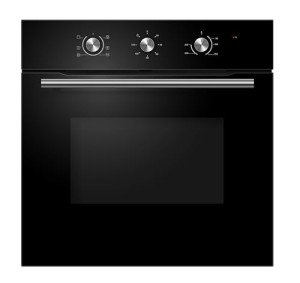15 Up-And-Coming Ovens Built In Bloggers You Need To Follow
The Comprehensive Guide to Built-In Ovens: A Modern Kitchen Essential
Built-in ovens have actually become a staple in modern kitchens, integrating visual appeals, functionality, and area effectiveness into a single home appliance. As homeowners strive for both functionality and design, understanding the features, benefits, and considerations of built-in ovens can substantially enhance the cooking experience. This post explores what built-in ovens are, their varied types, installation factors to consider, and FAQs to assist consumers make informed decisions.
What is a Built-In Oven?
A built-in oven is a kitchen device created to be integrated into cabinetry, developing a streamlined, cohesive appearance for the kitchen. Unlike freestanding ovens, which occupy additional floor space, built-in ovens are enclosed within wall systems or cabinets. They are readily available in numerous setups and sizes, permitting tailored services that accommodate the needs of diverse homes.
Types of Built-In Ovens
Built-in ovens can be categorized into different types based upon their features and cooking techniques. Here are a few of the most typical types:
Single Built-In Ovens
- Best for little kitchen areas and homes with modest cooking requirements.
- Typically have one primary cooking compartment, developing a compact footprint.
Double Built-In Ovens
- Suitable for passionate cooks and larger homes.
- Functions two different cooking compartments for versatile meal preparation.
Wall Ovens
- Set up at eye level for simple access.
- These ovens frequently feature convection technology for even cooking results.
Steam Ovens
- Usage steam to prepare food, protecting wetness and nutrients.
- Great for health-conscious people.
Combination Ovens
- Merge microwave and standard oven performances.
- Deal versatility for quick meals and standard baking.
Italian or European Style Ovens
- Often designed with distinct looks and advanced cooking innovations.
- Popular for high-end kitchen designs.
Advantages of Built-In Ovens
Built-in ovens provide a range of benefits that attract modern house owners seeking both functionality and aesthetic appeals. Some of these benefits consist of:
- Space Efficiency: Built-in ovens save valuable counter space, which is especially useful in smaller sized cooking areas.
- Boosted Aesthetics: With a custom look, built-in ovens boost the general design of the kitchen while offering a smooth integration with cabinets.
- Versatile Cooking Capacity: Available in various sizes, these ovens accommodate the cooking requirements of various families, from single residents to large families.
- Accessibility: The installation at eye level makes built-in ovens much easier to access, reducing the danger of spills or injuries when putting or getting rid of hot meals.
- Lower Energy Consumption: Many built-in ovens included energy-efficient modes that assist reduce electric usage in time.
Setup Considerations
Setting up a built-in oven needs careful planning and factor to consider. Here are some aspects to bear in mind:
- Dimensions: Before buying a built-in oven, measure the area readily available to make sure a correct fit. Built-in ovens can be found in particular standard sizes, so it is important to pick the ideal one.
- Ventilation: Adequate ventilation is required for efficient operation. Ensure there is a proper exhaust system that abides by local building regulations to prevent getting too hot.
- Electrical Requirements: Built-in ovens may require specific electric outlets or electrical wiring. Talk to a qualified electrical contractor to guarantee that the setup complies with safety standards.
- Professional Installation: Although some property owners choose DIY setup, employing an expert can assist make sure safety and correct installation for optimal performance.
Upkeep Tips for Built-In Ovens
Keeping your built-in oven not only prolongs its life-span but likewise guarantees effective operation. Here are some necessary upkeep ideas:
Regular Cleaning:
- Wipe down interior surface areas after each usage to avoid accumulation.
- Usage vinegar and baking soda for non-toxic cleansing.
Inspect Seals:
- Inspect the door seals to avoid heat loss.
- Replace damaged seals promptly.
Test Thermostat:
- Periodically check the temperature level precision with an oven thermometer. Adjust settings as required.
Service Annually:
- Schedule expert upkeep once a year to inspect electrical elements and make sure safe operation.
Maintenance Task
Frequency
Function
Clean interior
After each usage
Avoid accumulation and odors
Examine seals
Month-to-month
Ensure no heat leaves
Test thermostat
Every 6 months
Check temperature level accuracy
Professional service
Every year
Ensure optimal efficiency
FAQs About Built-In Ovens
1. built in gas double oven and hob packages built-in ovens come in different sizes?Yes, built-in ovens are available in various sizes to fit different kitchen setups and culinary requirements. It is vital to determine the readily available space before buying. 2. Can built-in ovens be utilized as routine ovens?Absolutely. Built-in ovens operate like routine ovens,
permitting you to bake, broil, and cook a range of meals. 3. Are built-in ovens energy-efficient? Numerous built-in ovens featured energy-saving functions and are created to use less
electrical power than freestanding models. 4. The length of time does setup take?Installation time can differ based on complexity but normally ranges from 1 to 3 hours. It is suggested to work with an expert for optimal results. 5. What is the lifespan of a built-in oven?With appropriate maintenance, built-in ovens can last anywhere from 10 to 15 years or longer.
Built-in ovens offer a wide variety of advantages for modern families, integrating benefit, energy effectiveness, and stylish design into one option.
When choosing and setting up a built-in oven, it's vital to think about the type that best fits your cooking habits, offered space, and aesthetic preferences. By understanding the benefits, setup requirements, and upkeep needed, property owners can elevate their culinary experience and produce sensational kitchen areas that impress both family and visitors alike. Buying a built-in oven can be a beneficial addition that streamlines cooking, improves home value, and savors cooking thrills for many years to come. 